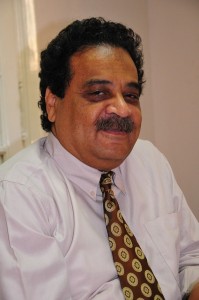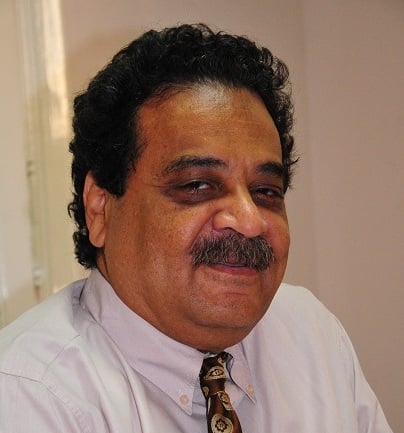
Martyr Shaimaa Al-Sabbagh was not, of course, the first victim after 30 June. We do not know exactly how many innocent Egyptians have been killed since 30 June. By that, we mean unarmed and peaceful citizens killed, without any use of direct violence in clashing with the authorities, which would, only in this case, result in killing as self-defence or as a way to curb potential violence.
Use of violence, by security forces against peaceful protesters or even against limited violent citizens (who only use rocks, for example), is only done by regimes like Israel, that was condemned by all international human right organisations against this in specific, disregarding the Arab-Israeli conflict itself or the Palestinian-Israeli conflict, and without even being part of the political conflict. These organisations deplored Israel’s huge acts of violence through using cartouche or live bullets to face rocks, which eventually led to injuries and killings.
Of course, we have witnessed this in photos. However, the Muslim Brotherhood and its supporters use cartouche and live bullets, and it was logical, in these protests, that the police would use force in return. In light of the lack of professionalism and enough experience from the police, due to the weak administrative body, especially the Ministry of Interior, it was thus logical that the police’s comeback would not be equal to the amount and type of violence, which would quickly get things back in control and avoid more outrageous clashes that would transform only to a revenge battle. Despite all of this, let us mention again that the Muslim Brotherhood and their supporters’ use of cartouche and live bullets was somehow the reason for this number of victims and dead people.
However, a proof of the inappropriate use of force from the police, or even the abuse of power, to the point of violating human rights or committing illegal acts, is Shaimaa Al-Sabbagh’s incident and the likes, such killings which took place in the clear morning and in the middle of the streets of Downtown Cairo, with tens of witnesses.
Who killed Shaimaa? Some say that we must search for the killer and it is not appropriate to quickly accuse the interior ministry if the investigation is not yet completed. Let’s draw the scene: the square was evacuated through the presence of armoured security vehicles, and no less than 100 members of the security forces. In contrast, the protesters were a few dozen mostly well-known characters, and all of a sudden, while Shaimaa is trying to leave after a security attack, she falls, covered in her own blood…so who killed Shaimaa?
The logical answer is: It’s possible that the killer was either someone who the demonstrators or police saw. If such a killer exists, it could be assumed that he would be arrested immediately, especially since the square contained only a limited number of demonstrators while Shaimaa was shot after the rest of them fled due to the tear gas. But the police didn’t bring a killer before the prosecution, and this brings out the second possibility that the killer is among the ranks of the police. This possibility was confirmed by witness testimony on social networking sites and investigation records.
If a police officer is the killer, it means that most likely his colleagues, just like the protesters, have seen him killing Shaimaa when she was heading away with nothing in her hands but some flowers. Why didn’t they immediately come forward to the prosecution to testify?
I think the answer to this question requires us to answer another question: Is what the police doing of killing an individual considered an error, or is it a systematic policy in accordance to supreme orders? If it comes to individual mistakes, we will probably see killers of protesters on 25 January locked up now instead of 25 January demonstrators. We would have seen killers of Maspero protesters also locked up. We would have seen killers of Emad Effat and “Gika” behind bars. However, the series of continuous falls of martyrs without bringing the perpetrators to trial confirms that the killing operations are institutional and well protected.
Behind the scenes, it is claimed that the reason behind not holding police officers accountable for any killing is the fear of a negative psychological impact on the officers’ spirits- those facing terrorism especially. If this is true, it supports the notion that killing is systematic and institutional, because a significant number of police officers know, by virtue of the above, they are above accountability. They know they may use excessive violence for one reason or another. It then makes sense to see reports of most conservative human rights organizations or the state’s National Council for Human Rights (NCHR), that the number of Egyptian citizens who died in police departments in 2014 has reached 90 citizens. Here, we aren’t talking about MBs or terrorists, but unarmed detainees.
What is also alarming and supports the idea that the killing is systematic and institutional is how the prosecution made Azza Soliman, head of the Center for Egyptian Women’s Legal Assistance (CEWLA), a suspect after being at the office for more than five hours waiting to give her testimony as an eye witness to the killing of Shaimaa.
So it’s not about one institution, but we can clearly see that there are other institutions in solidarity. Even the media institution has gone through similar situations when some outlets raced to defend the regime, or in other words, the killing, and presented a fabricated image to show that the killer was in fact the martyr’s fellow.
To complete the pillars of dark comedy we’re living with, dozens of protesters marched to Abdwel Moneim Riyadh Square, held up pictures of the interior minister and chanted in support of the regime, emphasising several things that seemed contradictory to a laughable extent. Sometimes Shaimaa is from the Brotherhood, sometimes the Brotherhood killed her in order to involve the interior ministry in this, and some other times her colleagues killed her. There were more and more possibilities that only tried to deny the one possibility that makes the most sense, that the Ministry of Interior has killed Shaimaa.
You may have noticed, dear readers, that no one in the protest that launched from Abdel Moneim Riyadh Square got killed. Security forces never even tried to stop the protest. While the very same security forces have fiercely stopped the Talaat Harb protest minutes after Talaat Fahmy, the Socialist Popular’s Alliance Party secretary, notified the officers in the square that a protest is about to leave the square. In order to not let anyone think that there’s a possibility that the interior ministry would hold back from doing these actions, and to let everyone know that it’s not just about a number of individuals who do not follow instructions, I’d like to say that Talaat Fahmy and Sayed Aboul Elaa (the young man who was trying to save Shaimaa) and a number of the party’s leaders were all arrested.
Why now? Why this escalation from the interior ministry’s side? Some would say that what happened was a message to terrorise political forces before the parliamentary elections. Yes, it seems that elections laws, which were opposed by all democratic forces, weren’t enough to guarantee the formation of a “tamed” parliament. And it seems that not holding elections until now to make the campaigning period shorter, is another thing that doesn’t guarantee forming a “tamed” parliament, but this time, through killing Shaimaa, we’re introduced to a new level, where the atmosphere for elections is being created: intimidation and fear from any political actions.
The fruits of this have already started to drop as some of the democratic forces’ voices began to get loud, in preparation for terror and fear, pushing you towards wondering: Did they really have to march in that protest?
Some people took it even further and considered being part of the protest a crime, not killing Shaimaa.
Ok, and then what? Defenders say that the killing is only a storm in a teacup that is ending soon – similar to what happened when Mubarak was set free on the same day two who opposed that were killed. It will pass the same way elections laws passed and the increase in prices passed, etc.
I tell those with these claims: “Nothing will ever be history.” All mistakes and crimes accumulate and increase the discontent in the absence of democratic mechanisms for reform, and in the end; the explosion happens.
Note, dear readers, that the next explosion will happen. It will happen like the previous one as a result of the accumulation of discontent. When the explosion is followed with suffering, confusion and maybe chaos, the responsible for this will be those who caused the explosion, not those who were involved. God, I have reached, bear witness.


